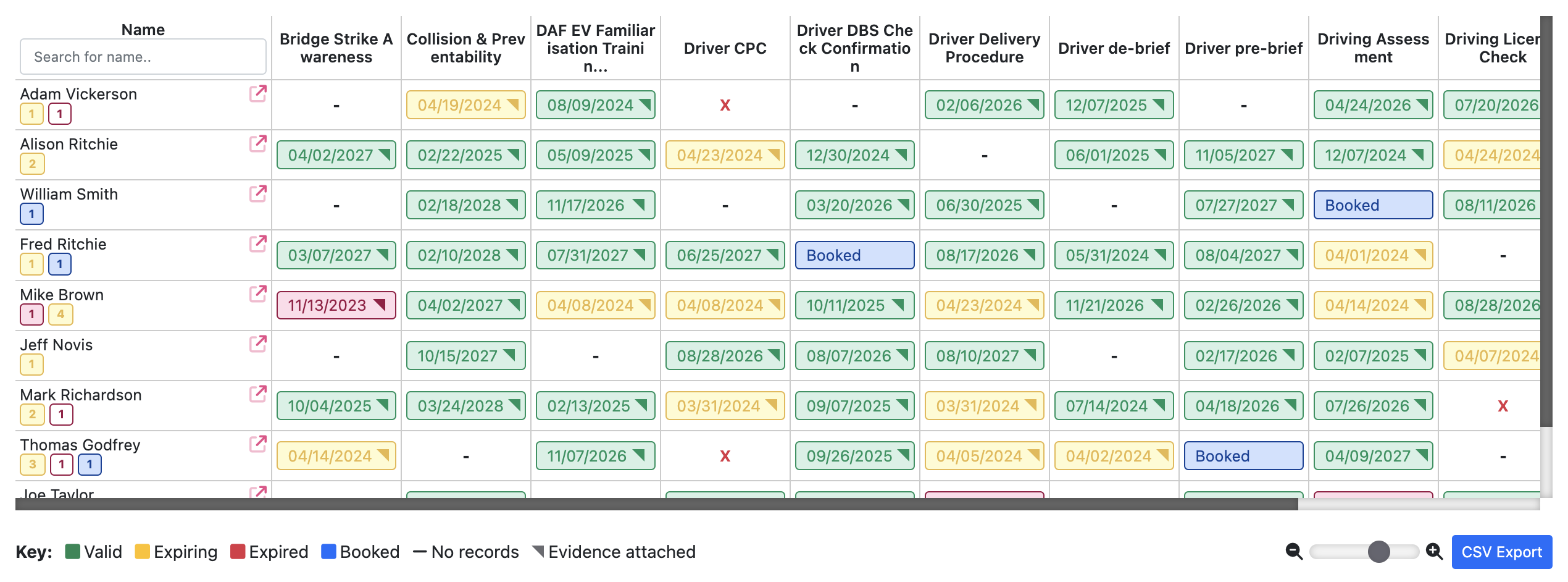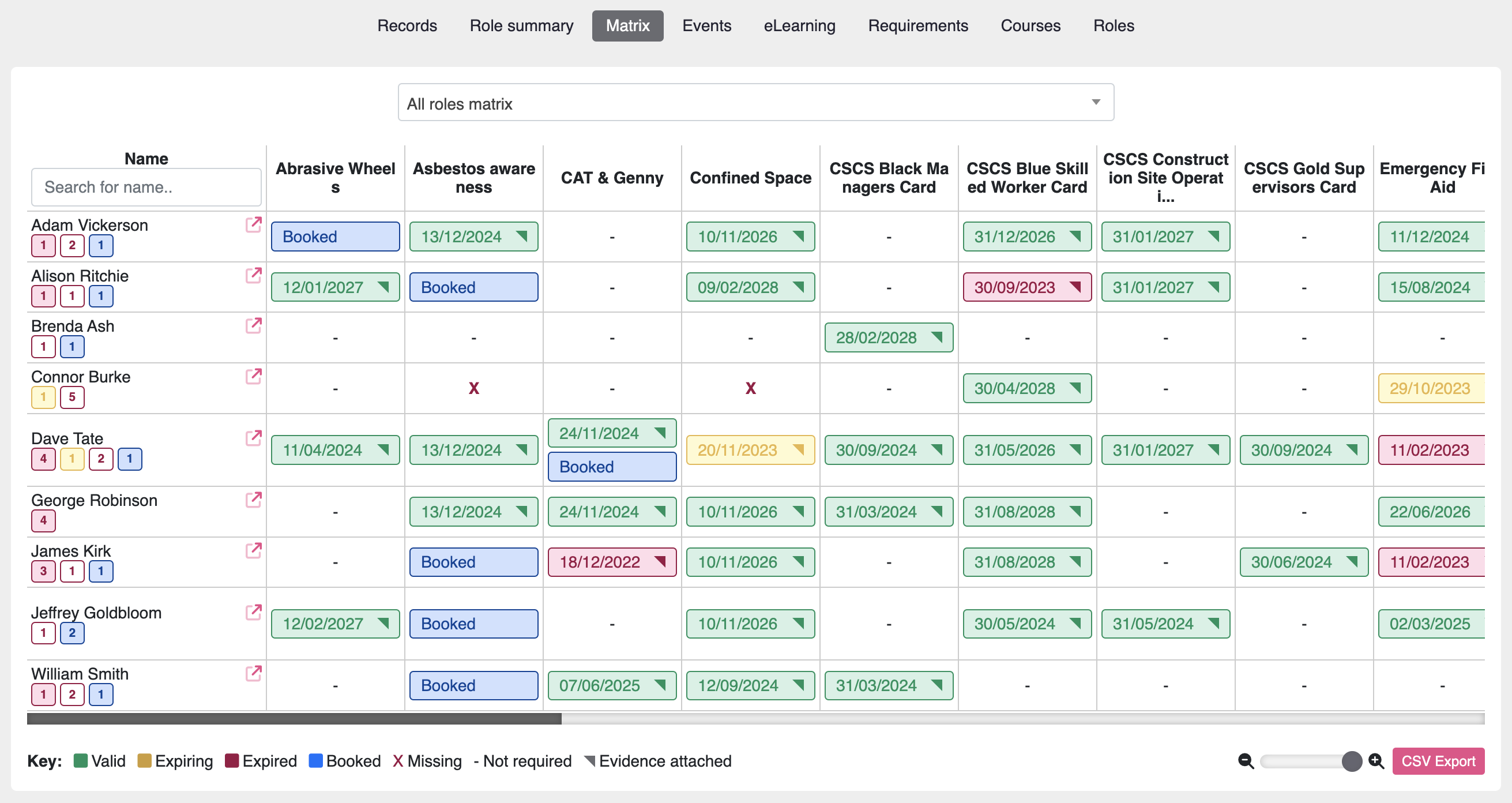A training matrix can be useful in a wide range of industries, as it is a tool that helps to track and manage the training of personnel.
Some industries where a training matrix may be particularly useful include:
- Aviation
- Healthcare
- Manufacturing
- Construction
- Transportation
- Energy
- Retail
- Hospitality
- Telecommunications
- Finance
However, any organisation that has a need to track and manage the training of its employees could benefit from using a training matrix.
By using a training matrix, organisations can better plan and schedule training activities, and can also facilitate compliance with regulations and industry standards.
1. Aviation
The aviation industry has strict regulations and industry standards that must be followed to ensure the safety of passengers and crew. By using a training matrix, aviation organisations can better plan and schedule training activities, and can also facilitate compliance with regulations and industry standards.
2. Healthcare
Healthcare professionals must have a high level of knowledge and skills in order to provide safe and effective care to patients. A training matrix can help to ensure that all healthcare personnel are properly trained and qualified to perform their duties, and it can also identify any gaps in training that need to be addressed. A training matrix is an essential tool for ensuring that all healthcare personnel have the necessary knowledge and skills to provide high-quality care to patients.
3. Manufacturing
Manufacturing operations can be complex and require a high level of knowledge and skills from employees in order to be carried out safely and effectively. A training matrix is an essential tool for ensuring that all manufacturing personnel have the necessary knowledge and skills to perform their duties safely and effectively, and to help the organisation achieve its goals and improve efficiency.
4. Construction
Construction can be a dangerous industry, due to the potential for accidents or injuries to occur on the job site. Some common hazards in construction include falls from heights, equipment-related accidents, and exposure to hazardous materials. A training matrix is an essential tool for ensuring the safety and effectiveness of construction personnel.
5. Transportation
The transportation industry can be dangerous due to the potential for accidents or injuries to occur while transporting passengers or goods. Some specific dangers in the transportation industry include vehicle accidents, injuries from handling cargo, exposure to hazardous materials, fatigue and violence against transportation workers. A training matrix mitigates these dangers and protect the safety and health of their employees.
6. Energy
Training compliance is important in the energy industry for a number of reasons:
- Safety: The energy industry can be dangerous due to the potential for accidents or injuries to occur, particularly in operations such as oil and gas extraction or power generation. Proper training can help to reduce the risk of accidents and injuries by teaching employees the skills and knowledge they need to perform their duties safely.
- Efficiency: Proper training can help employees to work more efficiently and effectively, which can improve productivity and reduce costs.
- Compliance: The energy industry is subject to a range of regulations and industry standards that must be followed to ensure the safety and reliability of energy production and distribution. Proper training can help employees to understand and comply with these regulations and standards.
- Quality: Proper training can help employees to produce higher quality work, which can improve the overall performance and reputation of the organisation.
- Career development: Training can help employees to develop new skills and knowledge, which can enhance their career prospects and contribute to the long-term success of the organisation.
A training matrix in the energy sector helps to ensure the safety, efficiency, and effectiveness of operations, and to support the career development of employees.
7. Retail
A training matrix is good for the retail industry because it helps to ensure that all employees are properly trained and qualified to perform their duties, which can improve customer service, increase efficiency and productivity, reduce errors, enhance compliance, and support career development.
8. Hospitality
Areas a training matrix helps improve within the hospitality industry are: improving customer service, increasing efficiency, enhancing compliance.
Overall, training is an essential aspect of the hospitality industry, as it helps to ensure the quality and effectiveness of operations, and to support the career development of employees.
9. Telecommunications
If a training matrix is not used in telecommunications the risks resulting from training gaps include decreased efficiency and productivity, decreased customer satisfaction, increased risk of errors, difficulty complying with regulations and industry standards, difficulty identifying and addressing training needs.
10. Finance
In finance a training matrix identifies training gaps around key types of training such as Financial analysis and modelling, accounting, regulatory compliance, financial software, industry-specific knowledge.
Related pages
Learn more about our software training matrix
John is our co-founder and is responsible for software design and development and loves helping people solve problems using innovative software.


